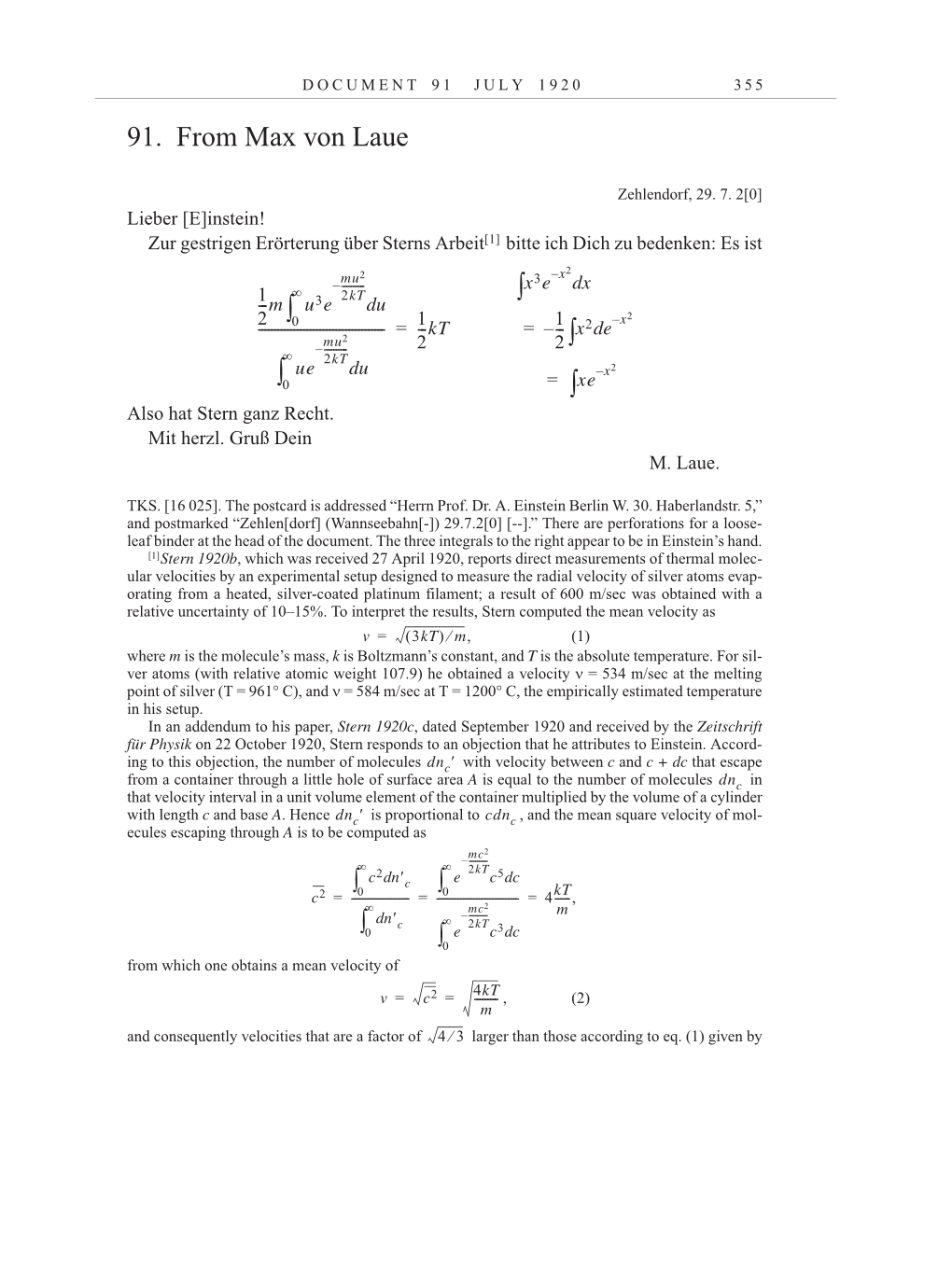D O C U M E N T 9 1 J U L Y 1 9 2 0 3 5 5
91. From Max von Laue
Zehlendorf, 29. 7. 2[0]
Lieber [E]instein!
Zur gestrigen Erörterung über Sterns
Arbeit[1]
bitte ich Dich zu bedenken: Es ist
Also hat Stern ganz Recht.
Mit herzl. Gruß Dein
M. Laue.
TKS. [16 025]. The postcard is addressed “Herrn Prof. Dr. A. Einstein Berlin W. 30. Haberlandstr. 5,”
and postmarked “Zehlen[dorf] (Wannseebahn[-]) 29.7.2[0] [--].” There are perforations for a loose-
leaf binder at the head of the document. The three integrals to the right appear to be in Einstein’s hand.
[1]Stern 1920b, which was received 27 April 1920, reports direct measurements of thermal molec-
ular velocities by an experimental setup designed to measure the radial velocity of silver atoms evap-
orating from a heated, silver-coated platinum filament; a result of 600 m/sec was obtained with a
relative uncertainty of 10–15%. To interpret the results, Stern computed the mean velocity as
(1)
where m is the molecule’s mass, k is Boltzmann’s constant, and T is the absolute temperature. For sil-
ver atoms (with relative atomic weight 107.9) he obtained a velocity = 534 m/sec at the melting
point of silver (T = 961 C), and = 584 m/sec at T = 1200 C, the empirically estimated temperature
in his setup.
In an addendum to his paper, Stern 1920c, dated September 1920 and received by the Zeitschrift
für Physik on 22 October 1920, Stern responds to an objection that he attributes to Einstein. Accord-
ing to this objection, the number of molecules with velocity between c and c + dc that escape
from a container through a little hole of surface area A is equal to the number of molecules in
that velocity interval in a unit volume element of the container multiplied by the volume of a cylinder
with length c and base A. Hence is proportional to , and the mean square velocity of mol-
ecules escaping through A is to be computed as
from which one obtains a mean velocity of
, (2)
and consequently velocities that are a factor of larger than those according to eq. (1) given by
1
2
--m -
u3e
mu2
2kT
- –---------
du
0
ue
mu2
2kT
–----------
du
0
---------------------------------------
1kT
2
-- - =
x3e–x2dx
2
-- -
x2de–x2
–1
=
xe–x2
=
v 3kT m, =
dnc
dnc
dnc cdnc
c2
c2dn
c
0
c
dn
0
----------------------
e
2kT
---------
–mc2
c5dc
0
e
2kT
---------
–mc2
c3dc
0
-------------------------------
4kT-,
m
----- = = =
v c2
4kT
m
--------- = =
4 3
